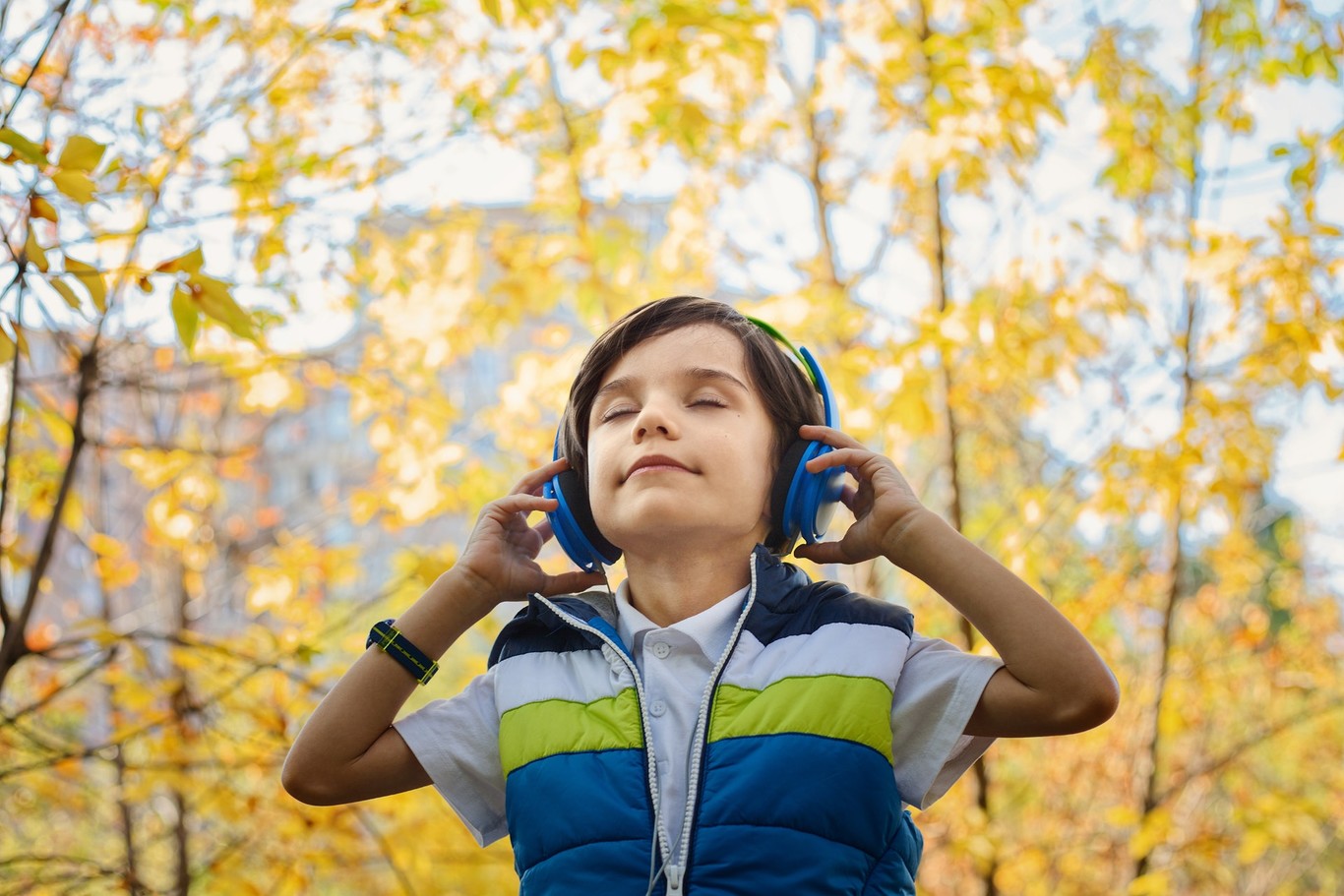
If you have a boy or girl who loves music in your environment, children’s headphones are a very interesting accessory to enjoy and also do it safely. In this children’s headphones buying guide, you will find what children’s headphones should be like and a wide variety of proposals in terms of design, specifications, and budget.
The key feature of children’s headphones: is volume limitation
As with standard headphones, it is important for children’s headphones that they offer a comfortable and ergonomic design and offer acceptable sound quality. What sets a kids’ headset apart from a regular headset, though, is the inclusion of volume limiting – a feature that restricts the sound reaching your ears.
The ear is an organ that progressively deteriorates over time. And more than due to a loud and sudden sound, hearing loss comes through the accumulation of noise over the years.
In this sense, the WHO warns: that 1.1 billion young people around the world are at risk of losing hearing within the next 40 years due to continued listening to “music playback devices”, which include headphones, but also home speakers, tablets, or televisions.
Specifically, this study shows that 50% of people between the ages of 12 and 35 are exposed to harmful sound levels. Thus, if you listen to music at more than 100 decibels for more than an hour a day, you are damaging your hearing system.
According to the WHO, the maximum exposure should be 8 hours at a maximum of 85 dB and 15 minutes at 100 dB. This recommendation is aimed especially at young people, who are restricted to one hour or less of music a day and “a volume that does not exceed 60% of the maximum capacity of the player.”
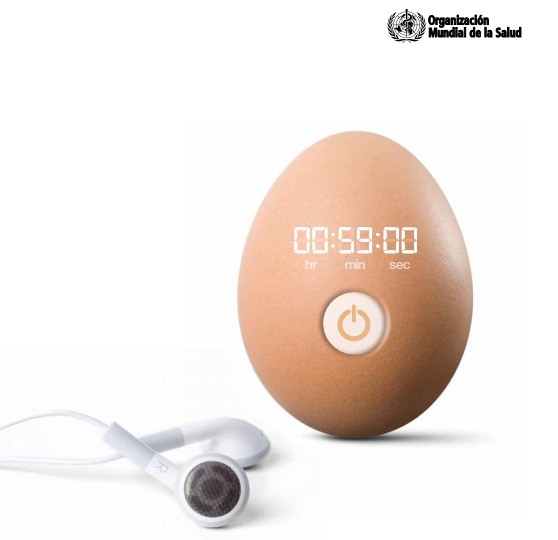
The WHO is not the only one that warns of the risks of hearing loss for several years. Thus, a study by the University of Sao Paulo published in the journal Science Daily concluded that more than half of today’s adolescents suffer from tinnitus, a disorder that causes us to hear spontaneous noises that do not come from any external source. Its cause mainly comes from wearing headphones at too high a volume. As a consequence, the hearing threshold remains somewhat reduced forever.
For almost a decade, European regulations have established that music players cannot be marketed if they play at a volume greater than 85 decibels, although in other regions such as the United States, they are more permissive.
Thus, the iPod has a limitation of 80 dB and most current computers do not exceed 80 dB either. However, some mobile phones and music players offer a modifiable acoustic limitation that allows you to increase their volume. Still, it is estimated that between 7 and 24% of portable music player users listen to it at 100% volume .
However, the 85 dB for an hour or less set by the WHO constitutes a maximum limit, but it does not mean that they are harmless for various reasons such as that the tolerance to noise exposure is not the same in one person as in another or that both young people as adults are exposed to additional noise from the environment throughout the day.
Precisely to minimize environmental noise, the WHO also recommends in terms of headphones that fit the ears and, if possible, isolate the noise from the environment.
Since we do not know the susceptibility of our little ones to sound nor do we have a decibel meter to carry all day to carry out measurements, the most effective thing is to use children’s headphones with sound limitation and be conservative when establishing the limits.
Featured models
Gorsun Headphones
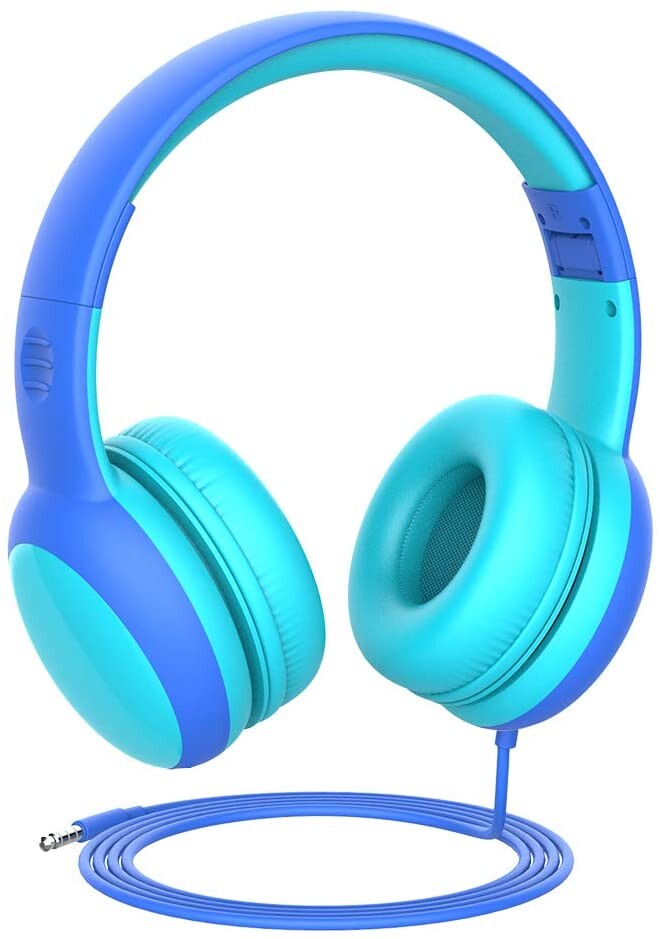
The Gorsun ( 13.99 euros ) are children’s helmets (from 3 to 15 years old) made of flexible plastic, light and resistant with soft parts for greater comfort. They have a switch with several positions to limit the volume to 85 dB.
It is a foldable on-ear headset with an adjustable headband and a jack socket to connect it to tablets, players, and other devices.
Easy SMX KM-666 Headphones
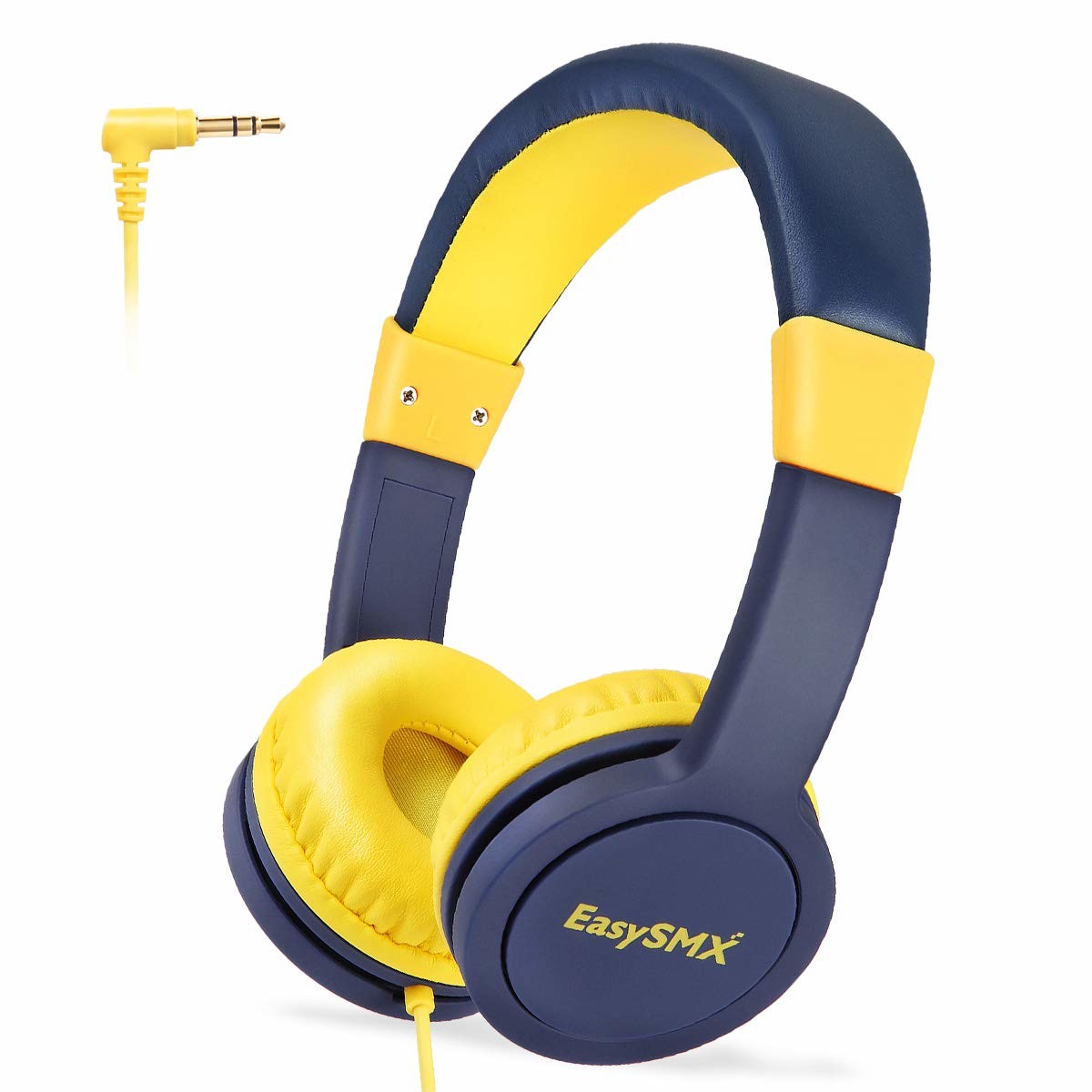
The Easy SMX helmets ( 13.99 euros ) are made of plastic and hypoallergenic silicone, so they are comfortable and light. In addition, it complies with international safety standards ASTM, CPSIA, and European EN71.
To connect them to devices such as tablets, laptops, MP3s, or phones, they use a 3.5 mm socket to which we will connect the 1.6 meter cable. They are indicated for an age range from 3 to 12 years of age and offer a volume limiter of 80 – 85 dB.
Riwbox RB-7S
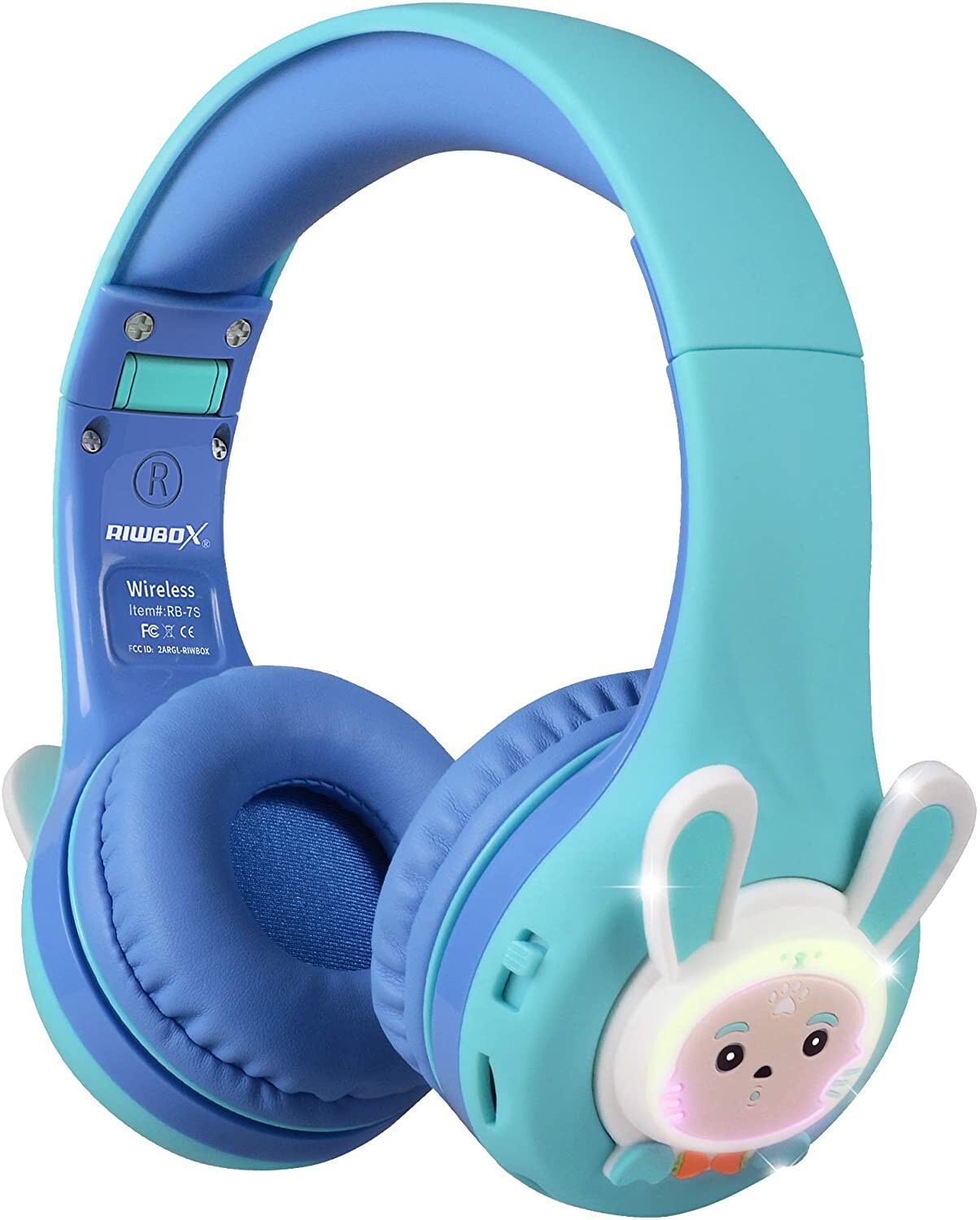
Very striking and childlike, the Riwbox RB-7S ( 24 euros ) stands out aesthetically both for the decorations on the helmets and for the lighting effects of the integrated LEDs. These adjustable supraural-type headphones have padded areas for greater comfort. They are kids’ safe helmets, that is, they integrate a volume limiter of 75dB, 85dB, and 95 dB.
Another of its strong points is its versatility since it can be used both through the jack socket and via Bluetooth. They are managed through the controls integrated into the helmet, where they also integrate a microphone and card reader.
JLab Audio Jbuddies
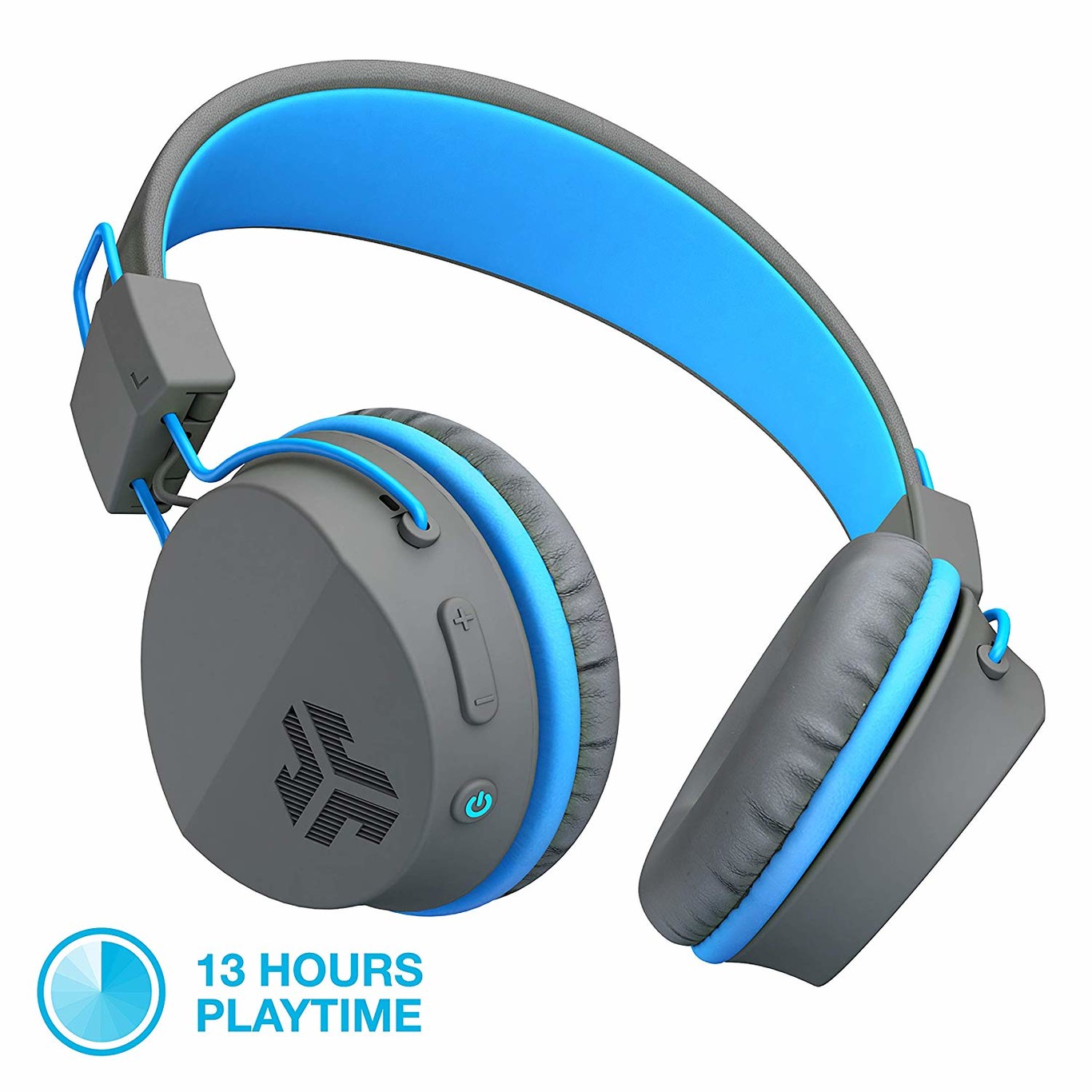
The Jbuddies ( 33.99 euros ) is a wraparound helmet model that has the peculiarity of connecting via Bluetooth, with the convenience of not having cables, offering an autonomy of up to 13 hours according to the manufacturer.
With an 85 dB volume limiter, these headphones made with foam, plush, and stainless steel pads, are foldable, and have an integrated microphone. Although they are children’s helmets, they have interesting technical specifications if we are looking for sound quality.
ONANOFF Inflight
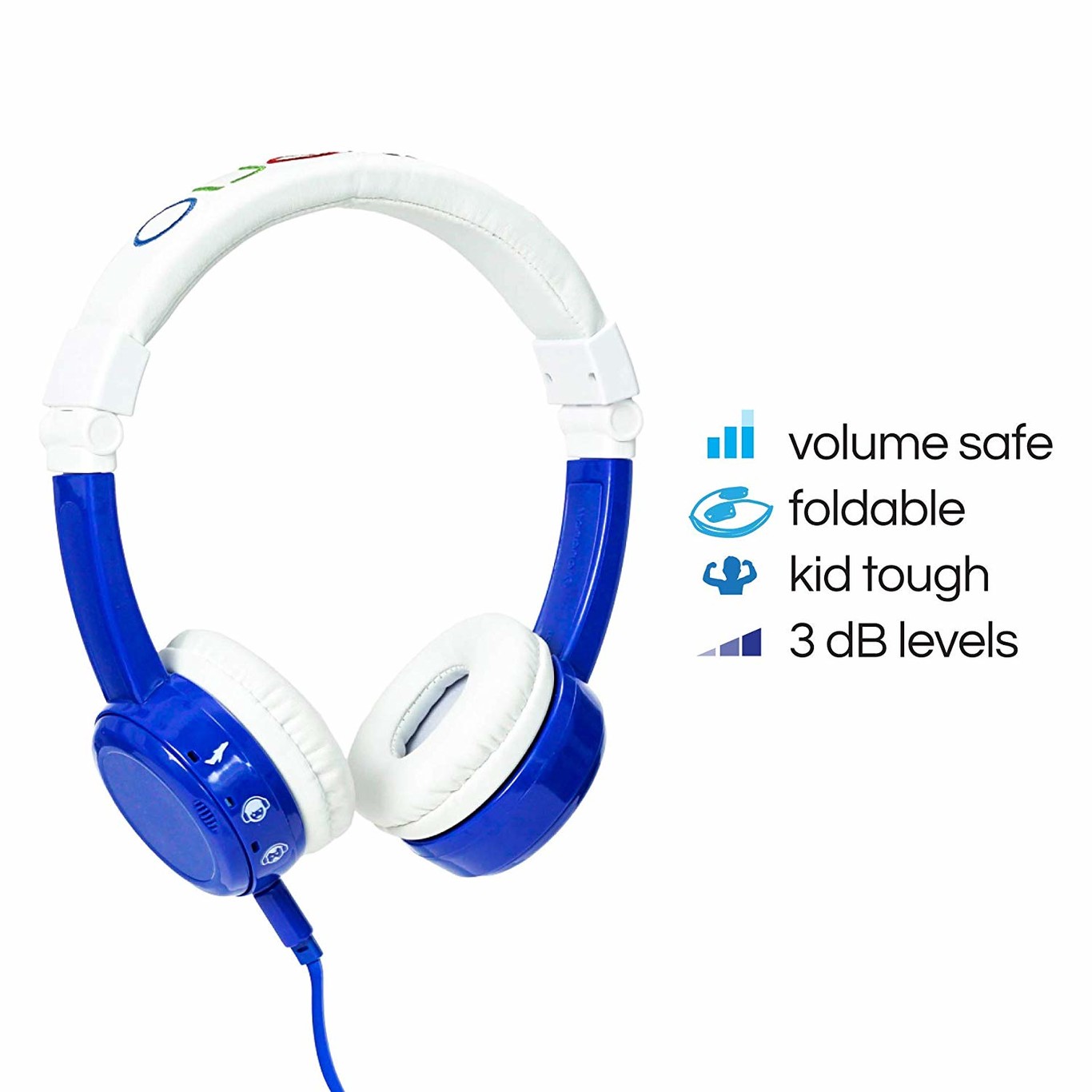
ONANOFF is a brand specializing in children’s devices that has several models of headphones in its catalog, among which the ONANOFF Inflight ( 29.99 euros ) stands out, its most complete model with cable and jack socket.
Of this model, its child-proof design stands out, where comfort and resistance prevail, as well as the casual aesthetics and the possibility of putting stickers to personalize it. In addition, they are foldable and come with a carrying bag.
It has a volume limiter of 74 – 85 and 94 dB to adapt to situations and ages. Another interesting feature if there are more children is that it includes an audio splitter to be able to connect more headphones and all listen to the same thing.
ONANOFF Wave
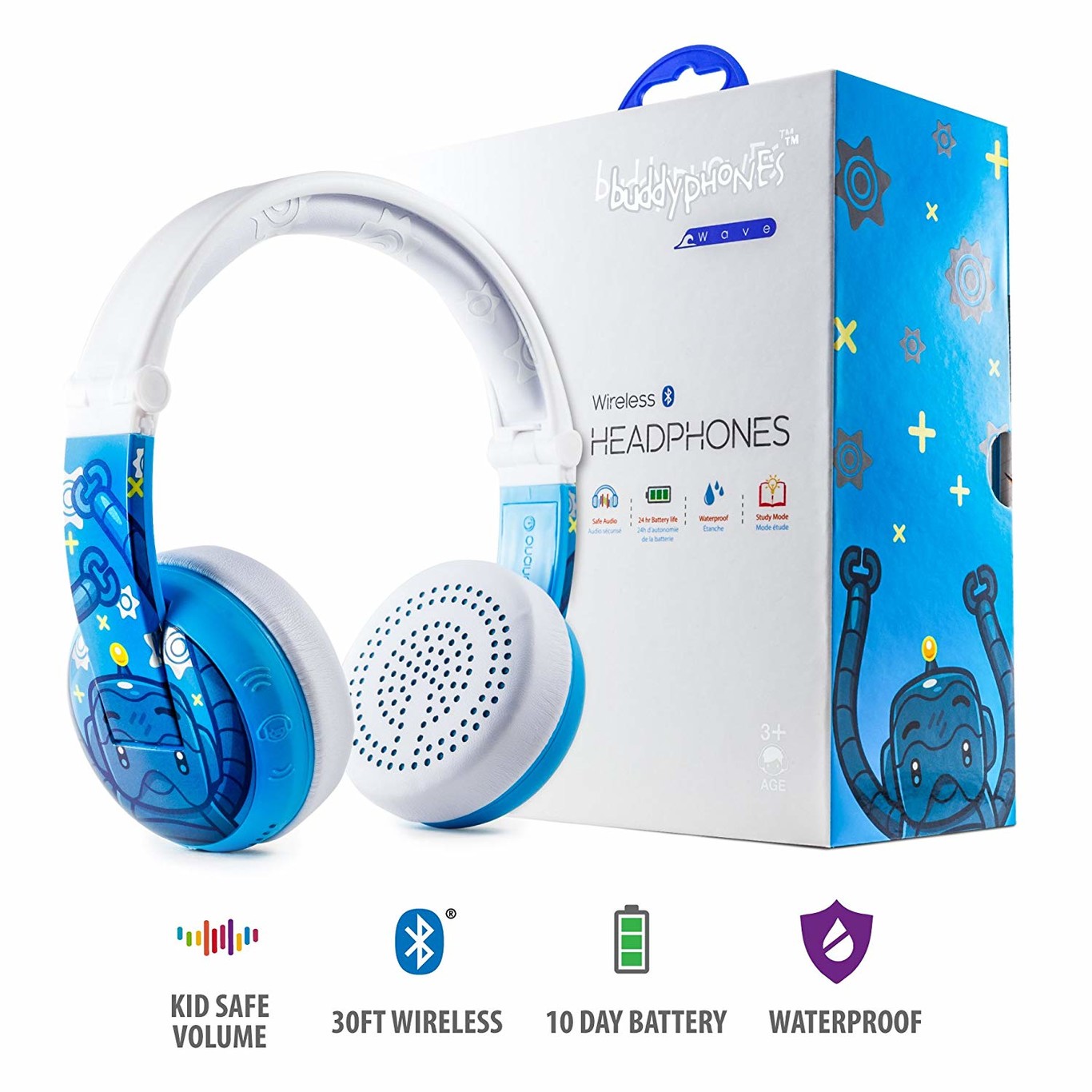
The Wave is ONANOFF’s most premium model in its catalog of children’s headphones. They share with the previous one its resistant and comfortable design, as well as its triple volume limiter, its audio splitter, and the travel bag. Of course, they have a study mode in which the clarity of the sound is optimized.
The ONANOFF Wave ( 69.99 euros ) receives sound through Bluetooth, so although it includes cables, we can use them wirelessly. Its battery allows approximately 24 hours of use, according to the manufacturer.
In addition, the Wave stands out for being waterproof, with IP67 certification, which will avoid unpleasantness if you use them on the beach or in the pool.
Puro Sound Labs
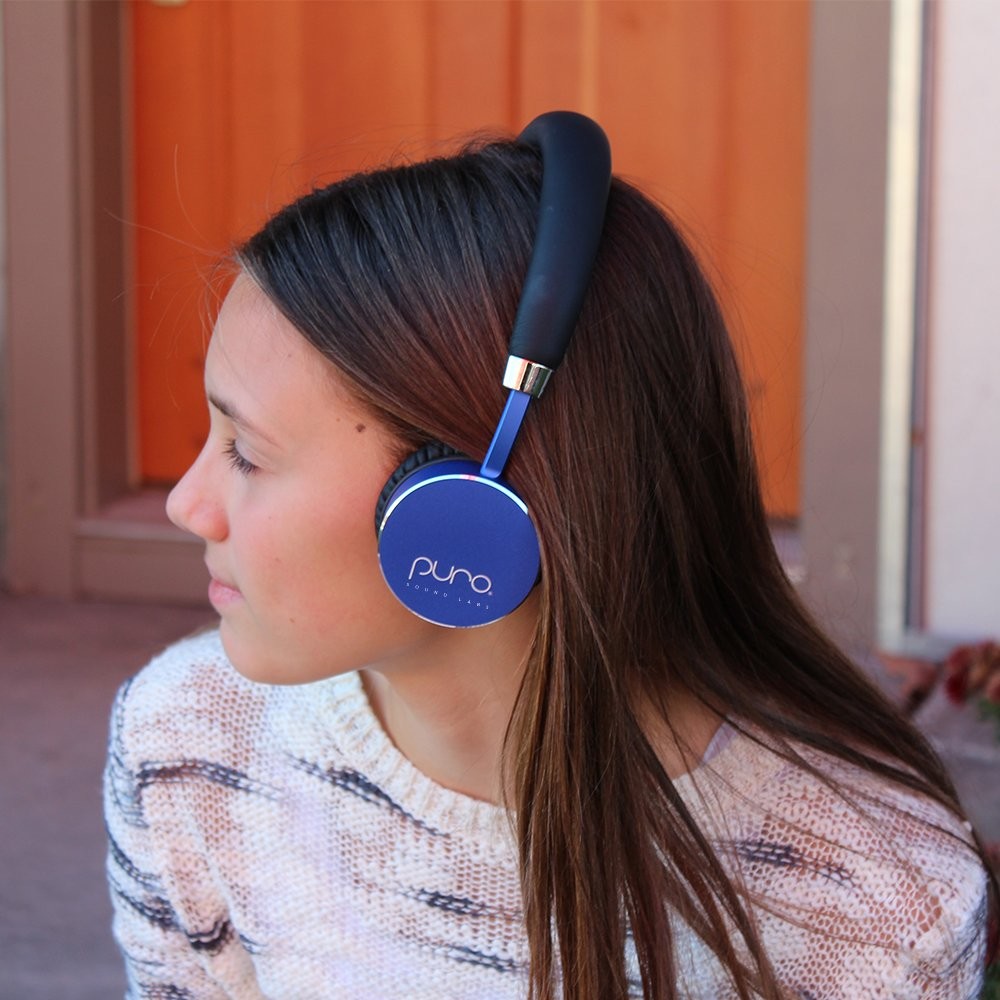
With premium aluminum finishes and a sober and elegant design reminiscent of adult headphones, the Puro Sound Labs BT2200 ( 89 euros ) are quality headphones that offer quality sound.
In this model, we can choose to use them with a cable or via Bluetooth, in which case they offer an approximate autonomy of 18 hours.

Sharlene Meriel is an avid gamer with a knack for technology. He has been writing about the latest technologies for the past 5 years. His contribution in technology journalism has been noteworthy. He is also a day trader with interest in the Forex market.











